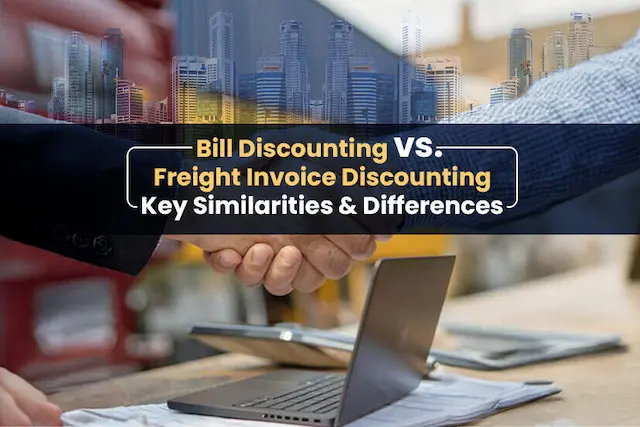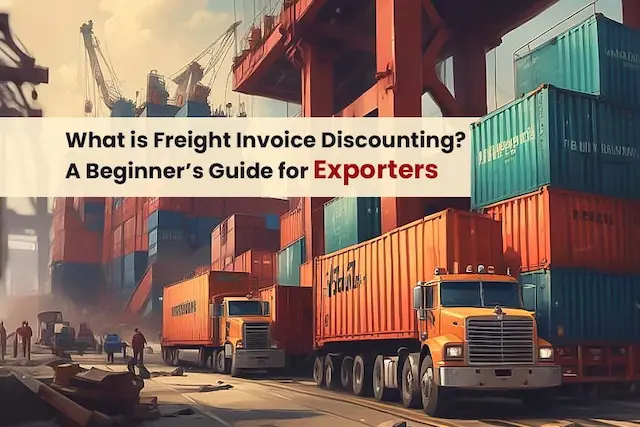Small business owners often don’t have enough money to keep their operations running smoothly. This can lead to problems in managing their supply chain and paying their employees on time. If you’ve experienced this in your own business, you know how tough it can be.
Banks and traditional lenders might not lend you money for your small business. In such situations, using a service like Credlix can be a good idea. They help you get money by using your unpaid invoices. But before you can appreciate how this works, you need to know the basics of invoice financing.
What Is Invoice Financing?
Invoice financing is a way for businesses to get money quickly by using their unpaid invoices. Instead of waiting for customers to pay, a company can get a loan based on the value of those unpaid bills. This helps them have the cash they need to keep their business running smoothly.
The lender will give you a portion of the unpaid amount, usually around 70-90%.
Types of Invoice Financing
There are different types of invoice financing. These types of invoice financing help small businesses manage their cash flow and access funds tied up in unpaid invoices.
Factoring: In factoring, a company sells its invoices to a third party (a factor) at a discount. The factor then collects payments from the customers. This provides immediate cash but at a lower amount than the invoice value.
Invoice Discounting: With invoice discounting, a business uses its unpaid invoices as collateral to secure a loan from a financial institution. The company retains control of collecting payments from its customers.
Spot Factoring: This is a flexible option where a business can choose specific invoices to factor, rather than all of them. It provides more control and can be cost-effective.
Selective Invoice Finance: Similar to spot factoring, selective invoice finance allows a business to pick and choose which invoices to finance, providing more control and cost-efficiency.
5 Benefits Of Invoice Finance For Small Business Owners
Here are five key benefits of invoice financing for small business owners:
Improved Cash Flow
Invoice financing helps boost your cash flow. Instead of waiting for customers to pay their invoices, you get money upfront from the lender. This allows you to cover operational expenses, pay employees, and invest in growth without delays. It’s like getting a cash advance on money you’re already owed.
Example: You own a small landscaping business, and a client owes you $10,000 for a job. They’ll pay in 60 days, but you need the money now to cover expenses and grow. Invoice financing steps in – you get about $9,000 upfront. This quick cash infusion allows you to pay employees, buy supplies, and expand your business. It’s like turning your future money into present opportunities, helping your business thrive.
In this scenario, invoice financing acts as a financial accelerator, turning your pending payments into immediate resources. It empowers small businesses to manage cash flow efficiently and make the most of growth opportunities without the delays of waiting for customer payments.
Fast Access to Funds
Small businesses often need money quickly to seize opportunities or address unexpected expenses. Invoice financing provides a speedy solution. You can typically get funds within a few days, ensuring you don’t miss out on important business opportunities.
Example: Consider a small artisanal bakery that’s just been offered a prime location at a bustling weekend market. The catch? They need to secure the spot and prepare in just one week. With limited cash on hand, traditional loans or waiting for customer payments won’t cut it.
Here’s where invoice financing shines. They have $5,000 tied up in unpaid invoices, but they need $3,000 quickly to grab the market opportunity. Invoice financing steps in, providing the needed funds within days. The bakery seized the opportunity, setting up a successful weekend stall and seeing a boost in sales that wouldn’t have been possible without quick access to funds.
Flexible and Controllable
Invoice financing is flexible. You can choose which invoices to finance, giving you control over when and how you use this financial tool. This flexibility allows you to tailor the financing to your specific needs, which is especially helpful for small businesses with varying cash flow cycles.
Example: Imagine you own a boutique fashion store with seasonal trends. Your busy season is just around the corner, and you need to stock up on inventory to meet the demand. But, you also have some outstanding invoices from your suppliers that won’t be paid for a few weeks.
With invoice financing, you have the power to handpick which of these invoices to finance. You decide to finance the most urgent ones, giving you the cash to stock up on the latest fashion trends for the upcoming season. This flexibility ensures you’re well-prepared for the influx of customers while keeping control over your finances during different cash flow cycles.
No Debt Incurred
Unlike traditional loans, invoice financing doesn’t add debt to your balance sheet. You’re essentially receiving an advance on your own money, so there’s no long-term liability to worry about. It’s a short-term solution to manage your cash flow without taking on additional financial burdens.
Example: Let’s say you run a small tech startup, and you’ve just landed a big project with a major client. They require you to invest in new software and equipment, which comes with a hefty price tag. Traditional loans would mean adding significant debt to your balance sheet, potentially affecting your credit and future financial flexibility.
Instead, you opt for invoice financing. You have a couple of outstanding invoices from completed projects that are worth $20,000. By using invoice financing, you receive most of this money upfront. This allows you to make the necessary investments without taking on long-term debt. It’s like having a financial safety net, ensuring you can seize opportunities and manage cash flow without worrying about burdensome loans.
Creditworthiness Not a Big Factor
Invoice financing is based on the creditworthiness of your customers, not your own credit score. This means that even if your business is relatively new or has a less-than-perfect credit history, you can still qualify for this financing option. It’s an accessible and inclusive way to secure funds for your business.
Example: Let’s imagine you’re a budding craftsman with a startup specializing in custom-made furniture. Your business is still relatively new, and your personal credit history has a few blemishes due to past financial challenges. When you need funds to purchase high-quality materials for a big order, traditional loans seem out of reach due to your credit score.
Enter invoice financing. You’ve secured a contract with a reputable interior design firm, and they owe you $15,000 for your exquisite furniture. The financing company evaluates your client’s creditworthiness rather than yours, recognizing their reliability. As a result, you receive the advance you need to fulfill the order. Invoice financing proves to be a lifeline, offering access to funds that your business might not have qualified for based solely on your personal credit history. It’s an inclusive solution, allowing you to grow your business regardless of past financial setbacks.
Conclusion
Invoice financing is a lifeline for small business owners. It offers a treasure trove of benefits that can make a world of difference. With improved cash flow, you can manage daily expenses and seize growth opportunities. Fast access to funds ensures you don’t miss out on important business chances. Flexibility and control let you tailor financing to your unique needs, and there’s no long-term debt to weigh you down. Plus, your credit history isn’t the main focus—your customers’ reliability matters most. Invoice financing is like a financial wizard, making your business journey smoother and more inclusive, regardless of past challenges.




